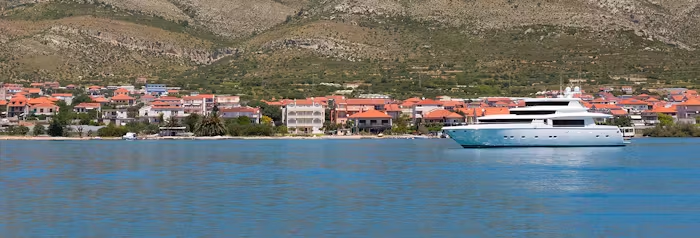
BOATERS BLOG
With the tail end of summer in sight, many of you are making weekly even daily trips to the water to enjoy your boat during the peak months. To ensure the safety of your boat while trailering, use the simple tips listed.
Choose the proper trailer for your boat
Your boat can be damaged more from the stress of road travel than from normal water operation. You can ease the stress by getting a trailer that properly fits your boat. The hull of a boat is designed to be supported evenly by water. When transporting your boat by trailer, it should be structurally supported as evenly across the hull as possible. The trailer should be long enough to support the length of the hull but short enough to allow the boat’s engine to extend freely. A poorly supported hull can sag and show stress cracks in unusual places.
The weight capacity of the trailer should be greater than the combined weight of the boat, motor, and equipment. The tow vehicle must be equipped to handle the weight of the trailer, boat, equipment and passengers.
Check before you’re on the road
Ideally, everyone who trailers his boat will have a physical checklist, so he doesn’t wonder whether or not the trailer break lights are working after he’s already on the road. Sometimes the most experience towers can get lackadaisical and forget a simple task, but a checklist can prevent this. Your checklist should include the following:
• Tow ball and coupler are the same size and the bolts with washers are tightly secured
• Coupler is completely over the ball and the latching mechanism is locked down
• Trailer is loaded evenly from front to back and side to side
• Safety chains are attached crisscrossing under the coupler to the frame of the tow vehicle
• Trailer lights are functioning properly
• Check the brakes to determine a safe stopping distance
• Check tires including the spare and wheel bearings
• Make sure water from rain or cleaning has been removed (water weighs over eight pounds per gallon and will shift during movement)
Towing precautions
Now that you have the proper trailer and followed the checklist to correctly connect your trailer to your tow vehicle, you can finally get on the road and head towards the water. While towing your boat follow few precautions to ensure you arrive safely to your destination.
Allow greater stopping distance – the extra thousand pounds in motion will increase the distance it takes you to stop. It is suggested that you leave the equivalent of one length of your tow vehicle/trailer combination for every 10 mph.
Allow more room – While towing your boat, your combined length is most likely more than double your normal vehicle length. This means you’ll need to compensate for this in multiple ways. Regardless of your speed, it will literally take you twice as long to pass another vehicle, and don’t forget the added weight will affect your acceleration. You’ll need to allow more room and consequently more time when passing a vehicle.
Don’t be swayed – If your trailer begins to sway, then the first thing you want to do is slow down. If after you’ve slowed down the swaying continues, you need to stop and do some inspecting. While inspecting your trailer check to see that the hitch is still fastened securely and that the hitchball and coupler haven’t worked loose. Also check that the tire lug nuts are tight and that the tires have enough air. However, one of the main causes of sway is that the load is not properly situated. If you think this is causing the sway, then rearrange the load and try again.
NBOA Marine Insurance is committed to keeping you, your family, and your boat safe. If you have questions regarding boat safety or if you would like more information on NBOA Marine Insurance, please visit www.nboat.com or call one of our marine specialists directly at 1-800-248-3512.
